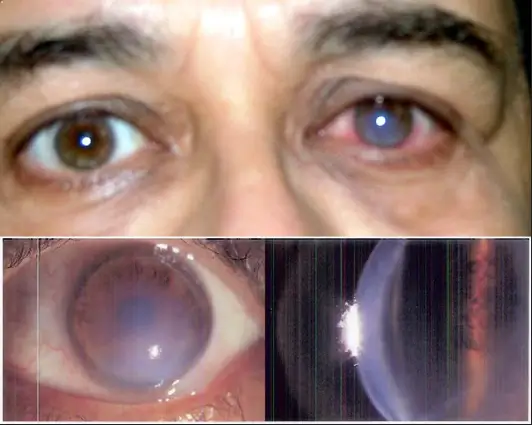What are Eye Floaters and Flashes?
Eye floaters and flashes are common visual phenomena that can occur due to changes in the gel-like substance within the eye called the vitreous humor. While they can be bothersome, they are usually harmless. Here’s an explanation of each:
Eye Floaters
Floaters are tiny specks, spots, or strands that appear to float across your field of vision. They are most noticeable when looking at a plain background, such as a blank wall or the sky. Floaters are actually tiny clumps of gel or cells within the vitreous humor that cast shadows on the retina (the light-sensitive tissue at the back of the eye). They can appear as dots, circles, lines, or even cobweb-like shapes. Floaters are more common as you age, as the vitreous humor tends to become more liquid and can form small clumps.
Flashes
Flashes are brief, flickering sensations of light that can occur in the peripheral (side) vision. They may appear like lightning streaks or camera flashes. Flashes occur when the vitreous gel tugs or pulls on the retina, stimulating the light-sensitive cells. This can happen during normal eye movement or due to jarring movements, such as a blow to the head. Flashes may also be associated with other conditions, such as retinal detachment or posterior vitreous detachment, which require prompt medical attention.
The occurrence of eye floaters and flashes is mainly attributed to age-related changes in the vitreous humor. The gel-like substance can become more liquefied and develop small pockets or clumps over time. These clumps cast shadows on the retina, leading to the perception of floaters. As the vitreous humor undergoes changes, it can also exert traction on the retina, causing the sensation of flashes.
Other factors that may contribute to the development of floaters and flashes include:
– Eye injuries or trauma
– Eye inflammation or infection
– Diabetic eye disease
– Nearsightedness (myopia)
– Cataracts or cataract surgery
– Retinal tears or detachments
आई फ्लोटर्स और फ्लैशेस क्या हैं?
आंखों का फ्लोटर और चमक आम दृश्य घटनाएं हैं जो आंख के भीतर जेल जैसे पदार्थ में परिवर्तन के कारण हो सकती हैं जिसे विट्रीस ह्यूमर कहा जाता है। हालाँकि वे परेशान करने वाले हो सकते हैं, फिर भी वे आमतौर पर हानिरहित होते हैं। यहां प्रत्येक का स्पष्टीकरण दिया गया है:
आई फ्लोटर्स
फ्लोटर्स छोटे-छोटे धब्बे, धब्बे या तार होते हैं जो आपके दृष्टि क्षेत्र में तैरते हुए दिखाई देते हैं। वे किसी सादे पृष्ठभूमि, जैसे कि खाली दीवार या आकाश, को देखते समय सबसे अधिक ध्यान देने योग्य होते हैं। फ्लोटर्स वास्तव में कांच के भीतर जेल या कोशिकाओं के छोटे-छोटे गुच्छे होते हैं जो रेटिना (आंख के पीछे प्रकाश-संवेदनशील ऊतक) पर छाया डालते हैं। वे बिंदुओं, वृत्तों, रेखाओं या यहां तक कि मकड़ी के जाले जैसी आकृतियों के रूप में भी दिखाई दे सकते हैं। उम्र बढ़ने के साथ फ्लोटर्स अधिक आम हैं, क्योंकि कांच का द्रव अधिक तरल हो जाता है और छोटे-छोटे गुच्छे बना सकता है।
चमक
चमक प्रकाश की संक्षिप्त, टिमटिमाती संवेदनाएं हैं जो परिधीय (पार्श्व) दृष्टि में हो सकती हैं। वे बिजली की लकीरों या कैमरे की चमक की तरह दिखाई दे सकते हैं। चमक तब होती है जब कांच का जेल रेटिना को खींचता है या खींचता है, जिससे प्रकाश-संवेदनशील कोशिकाएं उत्तेजित हो जाती हैं। यह आंखों की सामान्य गति के दौरान या सिर पर झटका जैसी झटकेदार गतिविधियों के कारण हो सकता है। चमक अन्य स्थितियों से भी जुड़ी हो सकती है, जैसे कि रेटिना डिटेचमेंट या पोस्टीरियर विटेरस डिटेचमेंट, जिसके लिए तत्काल चिकित्सा ध्यान देने की आवश्यकता होती है।
आंखों के फ्लोटर्स और चमक की घटना मुख्य रूप से कांच के हास्य में उम्र से संबंधित परिवर्तनों के लिए जिम्मेदार है। जेल जैसा पदार्थ अधिक तरलीकृत हो सकता है और समय के साथ छोटी जेबें या गुच्छे विकसित कर सकता है। ये गुच्छे रेटिना पर छाया डालते हैं, जिससे फ्लोटर्स का आभास होता है। जैसे ही कांच के द्रव में परिवर्तन होता है, यह रेटिना पर भी दबाव डाल सकता है, जिससे चमक की अनुभूति होती है।
अन्य कारक जो फ्लोटर्स और फ्लैश के विकास में योगदान दे सकते हैं उनमें शामिल हैं:
– आँख में चोट या आघात
– आंखों में सूजन या संक्रमण
– मधुमेह नेत्र रोग
– निकट दृष्टिदोष (मायोपिया)
– मोतियाबिंद या मोतियाबिंद सर्जरी
– रेटिना का टूटना या अलग होना




